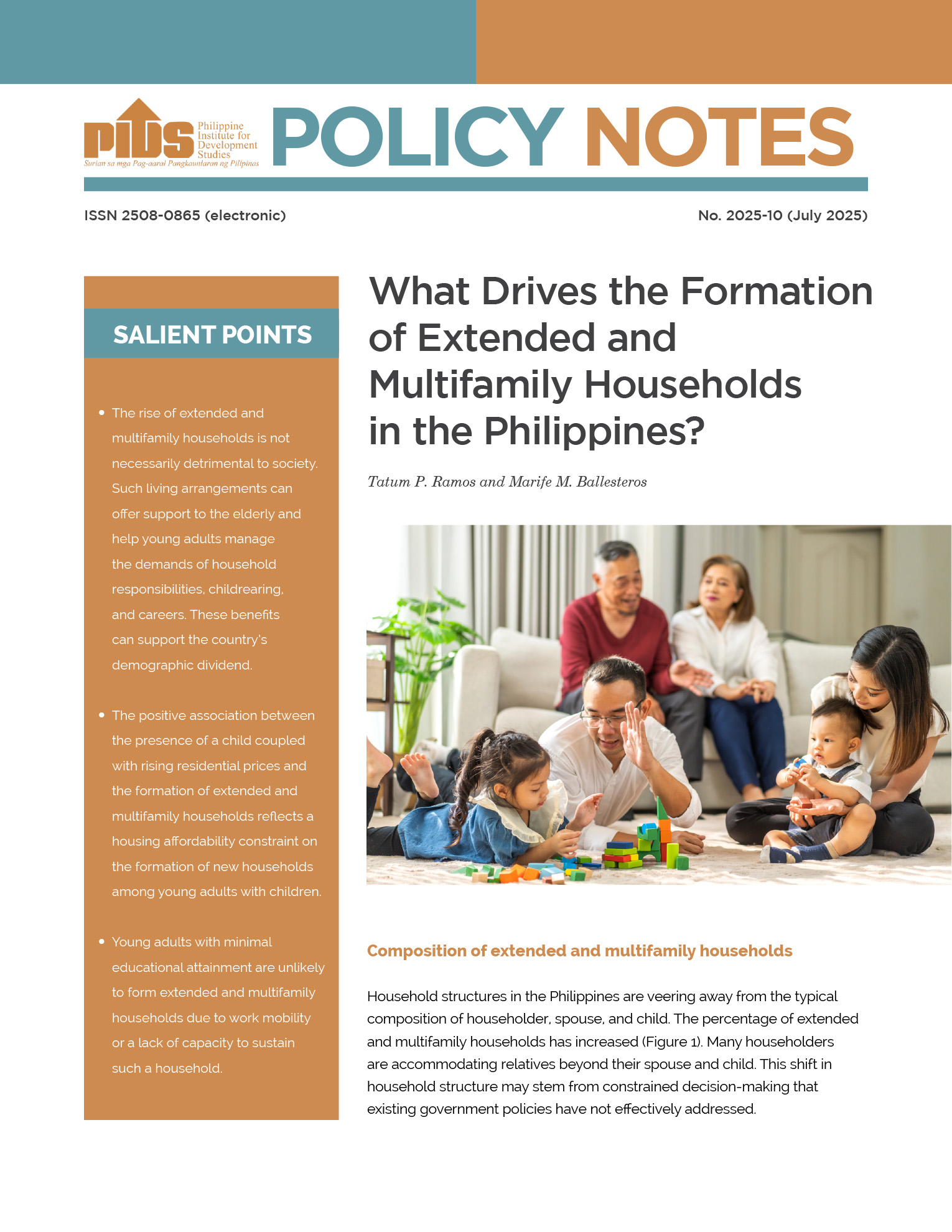
Research is important to allow policymakers and frontline agencies to manage the harmful effects of disasters, climate change, and climate variability, as well as to assist affected groups more effectively. For instance, in 2004, PIDS Senior Research Fellow Celia M. Reyes and her team, together with collaborators from the Philippine Atmospheric, Geophysical and Astronomical Services Administration and Leyte State University, began a four-year project funded by the Australian Centre for International Agricultural Research on enhancing the preparedness of small farmers to climate anomalies associated with El Nino and La Nina. The project sought to increase their understanding of seasonal climate forecasts (SCF) as a tool for coming up with more informed farm production decisions. Advance information in the form of SCF has the potential to not only mitigate the adverse consequences associated with harsh climate variability but also improve their decisionmaking that could lead to increased farm profits.
Find out more about disasters and climate change from PIDS studies. Understand the economic impact of natural calamities on farm output and food security. Get a grasp of how much it costs to neglect disaster preparedness, and how cooperation and local government involvement could help mitigate the effects. You may access these studies via the SocioEconomic Research Portal for the Philippines by simply typing 'disasters' and 'climate change' in the Search box.
- Impacts of Natural Disasters on Agriculture, Food Security, and Natural Resources and Environment in the Philippines
- Typhoons, Floods, and Droughts: Regional Occurrence and Value of Damages to Rice Farming in the Philippines
- Forecasting Natural Hazards and Disasters in Selected Southeast Asian Countries: The Need for Cooperative Action
- Examination of Intense Climate-related Disasters in the Asia-Pacific
- Mainstreaming Disaster Risk Management in Local Governments
- Weather and Climate-related Disasters: the Cost of Inaction
- Coping with Climate Variability and Change
- Assessing Rainfall Variability in Philippine Study Sites: The Rainman Application












